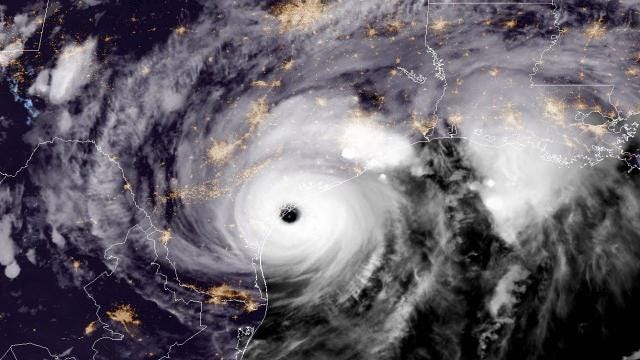

The geographical patterns of Harvey and Irma will allow better predictions for future hurricanes. After completing relief and cleanup, reconstruction will most likely include new building codes and requirements to better prepare for the next hurricane season. In Miami, dramatic action might be necessary the soonest. The city, which some experts predict could be mostly underwater as sea levels rise in the next century, is perhaps the most ill-equipped to deal with a direct hit from a hurricane. In the aftermath of Harvey, Houston has faced severe criticism for a lack of zoning, planning, and for a pattern of development that only emphasized flood hazards. It’s become a common refrain that Houston’s low-density sprawl, the extreme rate of concrete and asphalt-pouring in the suburbs, and the degradation of wetlands by developers create the conditions that led to multiple 100-year floods even before Harvey, and the need for dramatic projects to save the city.
Many argue that hurricane Harvey and Irma were not made worse by climate change. But the science is this: Hurricanes thrive over warm water and strengthen in intensity; oceans have warmed on an average 1 to 3 degrees Fahrenheit over the past century, and sea levels have risen about 7 inches during that time. Throw in compound flooding -- the combination of rising sea levels from global warming, storm surge and extreme rainfall -- and you have the perfect mix for record flooding. Both storms were massive in scope. Harvey dumped a record 51 inches of rainfall as it sat over Texas and Louisiana, saturating the region with 27 trillion gallons of water in six days. Irma was the strongest Atlantic-basin hurricane ever recorded outside the Gulf of Mexico and the Caribbean Sea, spending three days as a Category 5 hurricane, the longest Category 5 on record. Irma maintained winds of 185 mph or above for a total of 37 hours, the most ever for a storm. Miami Mayor Tomás Regalado said as Irma bore down on Florida, "If this isn't climate change, I don't know what is."


While the storm relief was the most important piece of the legislation, this week’s votes also represented one of the more remarkable political moments of Trump’s first term, as Republican majorities in the House and Senate ratified an agreement the president sealed with Democrats over the objections of both House Speaker Paul Ryan and Senate Majority Leader Mitch McConnell. The deal came together rapidly at the end of an hour-long meeting at the White House on Tuesday, when Trump acceded to demands from Senate Minority Leader Charles Schumer and House Minority Leader Nancy Pelosi that the Harvey package include only a short-term increase in the debt limit. Ryan and McConnell had wanted a much larger increase that would last through the 2018 elections, to shield Republican lawmakers from another politically painful vote and to block Democrats from demanding additional concessions in exchange for their votes. Trump’s decision stunned Republican lawmakers, who suddenly found themselves on the wrong side of an impulsive president’s desire to claim a bipartisan win. Hopefully this will set a precedent for disaster relief bills in the future.
Home